▲Photo by AtsushiSekino
[Kawasaki Z1000] Details and Test Ride Review
The Z1000 is a modern version of the famous Z1 (900SUPER4) from the 1970s, but with a four-barrel exhaust system, the modern-day Z has evolved to this point over the past 15 years. Former chief editor of a motorcycle magazine for beginners, Hiroaki Yatagai, reports on his test ride.
Pure "Street Fighter" styling
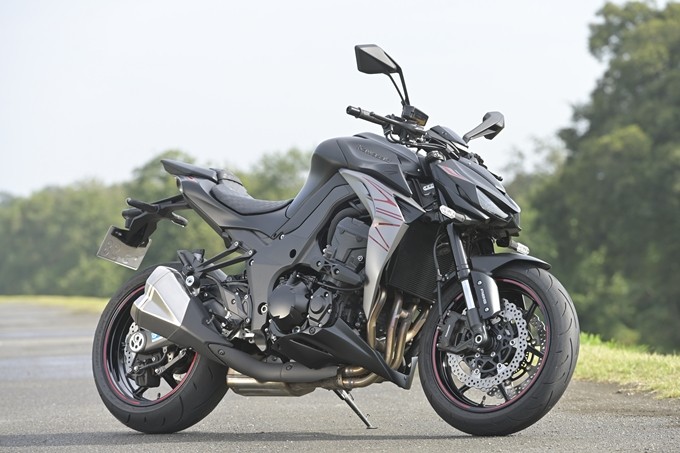
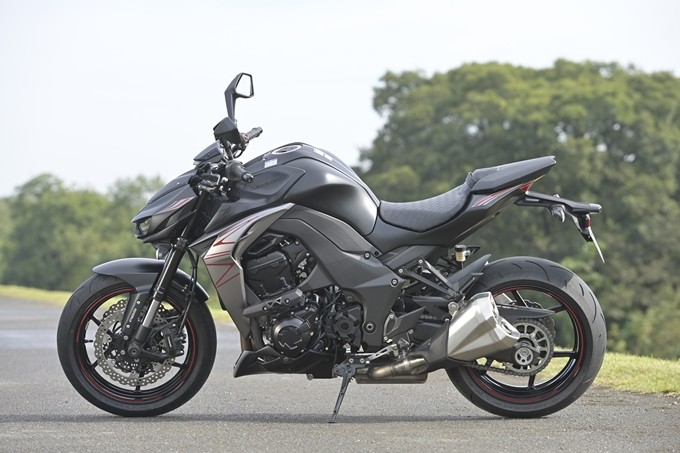
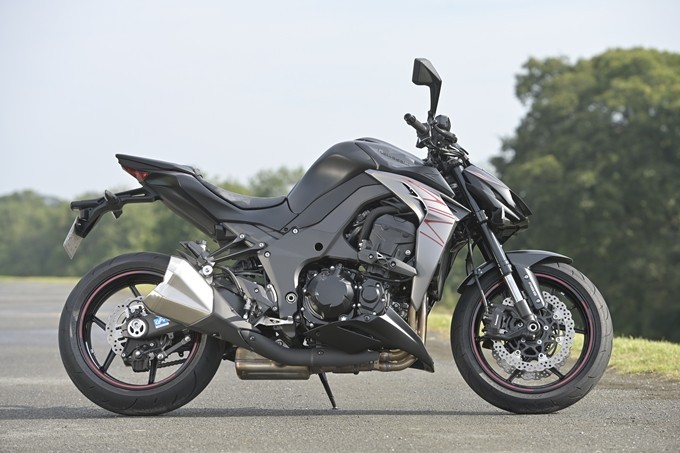
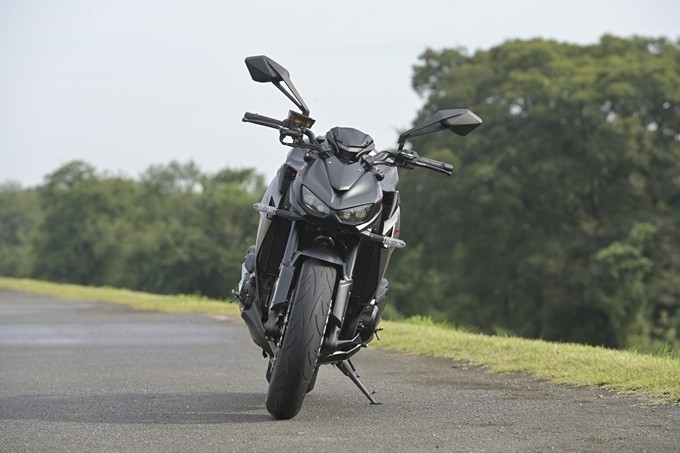
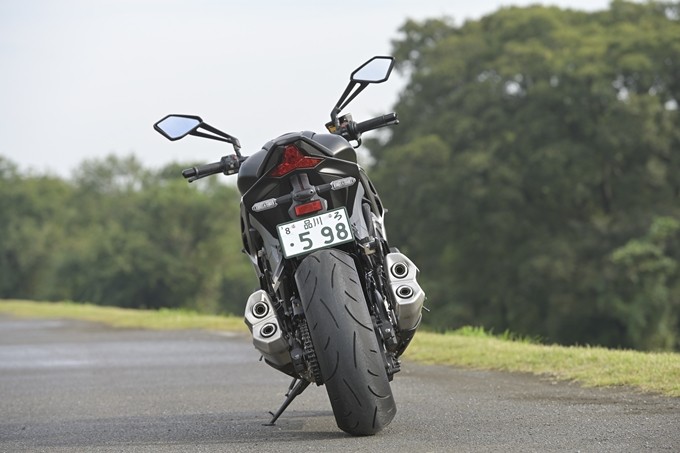
[Overall length x Overall width x Overall height] 2,050mm x 790mm x 1,055mm
[Curb weight] 220kg
[Wheelbase] 1,440mm
[Minimum ground clearance] 125mm
The street-fighter genre originated from the customization style of removing the cowl of a supersport motorcycle and converting it to pipe handlebars. 2003 saw the introduction of the Z1000 with a steel frame and a ZX-9R type engine. The Z1000 was introduced in 2003 with a steel frame and a ZX-9R-type engine, but the current model has a highly rigid aluminum twin-spar frame and a 1,043cc liquid-cooled four-stroke four-cylinder engine. The styling is massive and sturdy. The low, slanting design is the epitome of a street fighter.
Selling price
Metallic Flat Spark Black x Metallic Matte Graphite Grey: 1,171,500 yen (tax included)
*As of October 2020
The awkward position in front of you
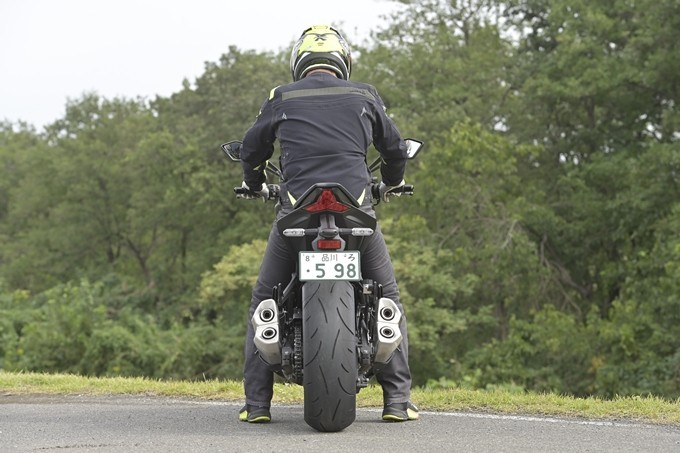
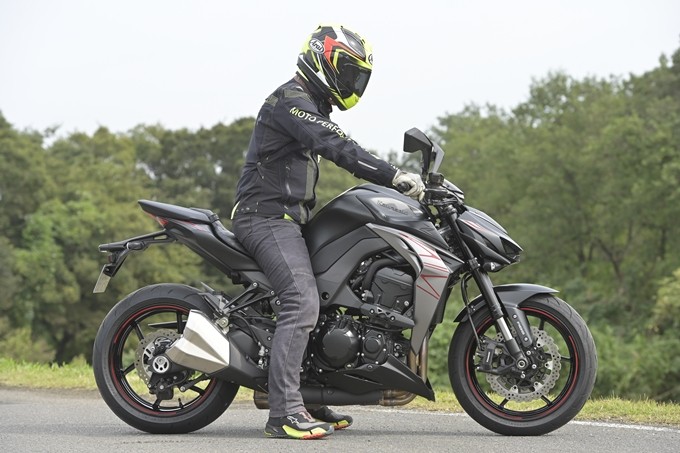
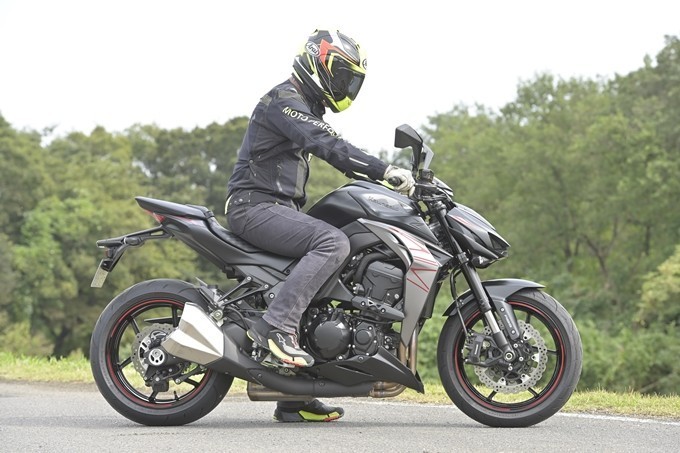
[Seat Height] 815mm
It's not very low numerically, but the straddling area is quite slim and narrowed down for good footing, and you can attach it to the heels of both feet. The upper body is more forward-leaning than the STD naked position. The slanted headlight and handlebar-mounted gauges provide a wide field of vision.
Strong personality but easy to handle! -Actual Riding Review
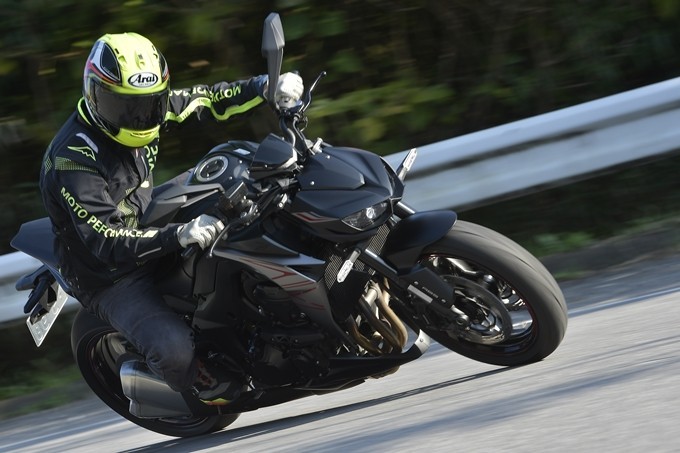
Anybody who's fast in this motorcycle is really good.
The Z1000 has been given the "Sugomi styling", which gives it a dynamic look like a beast standing low. The 1,043cc liquid-cooled 4-stroke inline four-cylinder engine has a street setting that emphasizes mid-range and low-speed performance rather than the high rpm range of the Supersport circuit settings. The engine's "strong acceleration" can be fully felt in the normal range. In particular, the quadratic curve of acceleration from 6,000rpm to the red zone gives a strong feeling. The supercharged Z H2 in the same "Z series" also has a very extreme character, but the Z H2 requires a traction control system to finally bring out its character. The Z1000, on the other hand, does not have any "insurance" such as a traction control system. The ability to keep the rear tire gripped to the road surface is entirely dependent on the return of your right hand. The Z1000 is even more exciting than the Z H2 in that sense, as it requires a certain amount of skill and self-control from the rider to control such power. In addition to traction control, the rider needs to be able to say, "I don't need that kind of insurance."
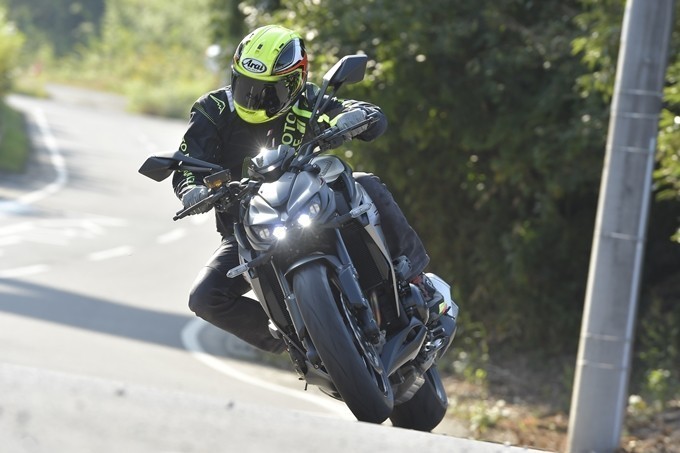
There are many ways to enjoy the strong acceleration of this engine. First of all, the position. The more you drive, the more excited you will become, thanks to the powerful view of the road surface just in front of the front wheels. In addition, the rigid aluminum twin-spar frame and the mass concentration make the body compact and light in footwork. It has a sporty, not to say nerve-racking, feeling. The brakes are very strong as if the machine is telling me that "I'll shake you off if you're not careful."
What's surprising is how easy it is to ride, while at the same time creating such an intense character. How do you reconcile "radical character" and "easy to handle"? The keyword is engine speed. This Z1000 travels like a completely different machine at under and over 4,000rpm. This is best illustrated by the tachometer, which is divided into an eye-catching top and bottom section. The lower LCD section is below 4,000rpm, a manageable area, and the upper LED bar graph lights up from left to right when you get above that level. The top bar graph is a pretty sketchy memory by the looks of it, but even that is "I can't afford to pay attention to the tachometer, can I?" It's a nice touch. In fact, there's no time to look down while accelerating at full speed, but thanks to this LED bar graph, you can keep track of your rpms if the gauge is in your line of sight.
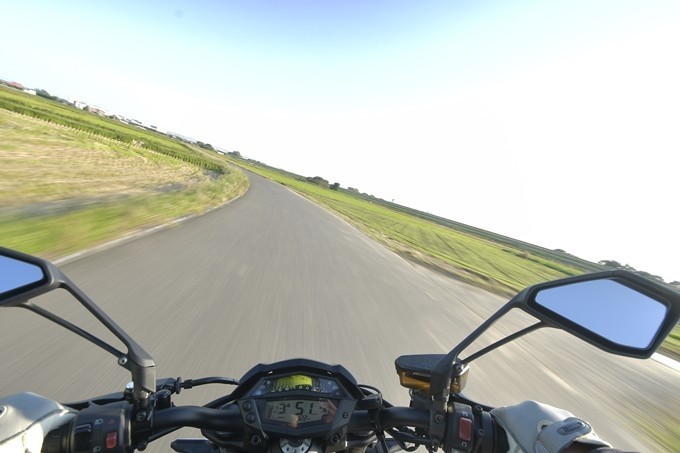
On the other hand, the sub-4,000rpm range is surprisingly docile. It was surprisingly docile under 4,000rpm. The vehicle has been tuned to stay under 4,000rpms in situations where it is needed to be flushed out, such as city streets, congested roads, and highway cruising. To say that the motorcycle is easy to drive in this rpm range is a misnomer, but it's possible to drive it in a normal sense. The engine doesn't rush you in any way, and it's not boring at all. Once you've turned on the "fireworks" switch, all you have to do is drop a gear or two and raise the engine speed all at once and the beast mode is on. It's all about sharpening your nerve and getting into the world of machine control.
Meter & Lights
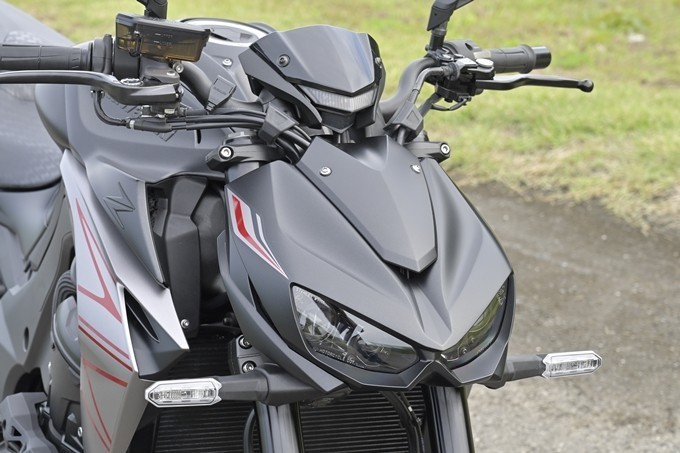
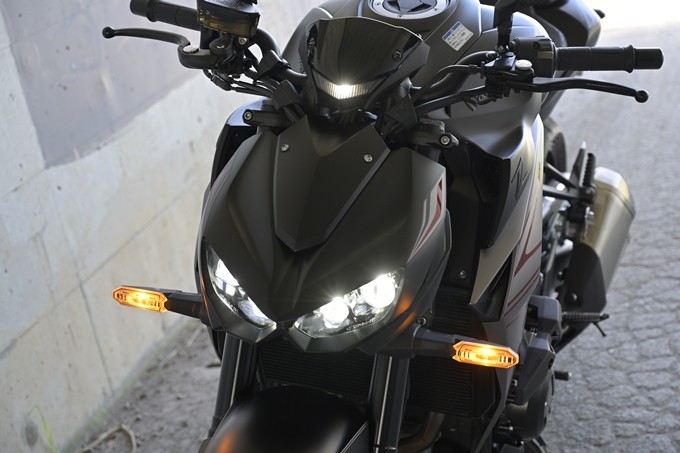
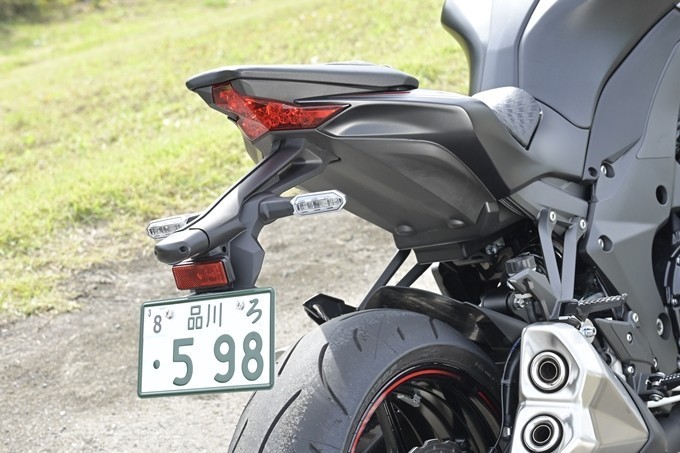
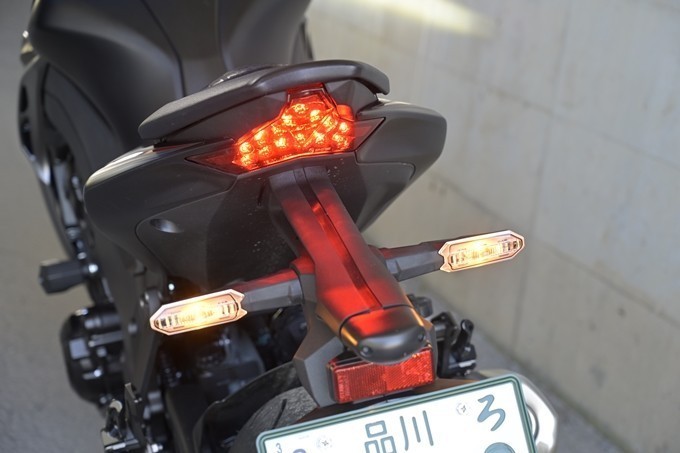
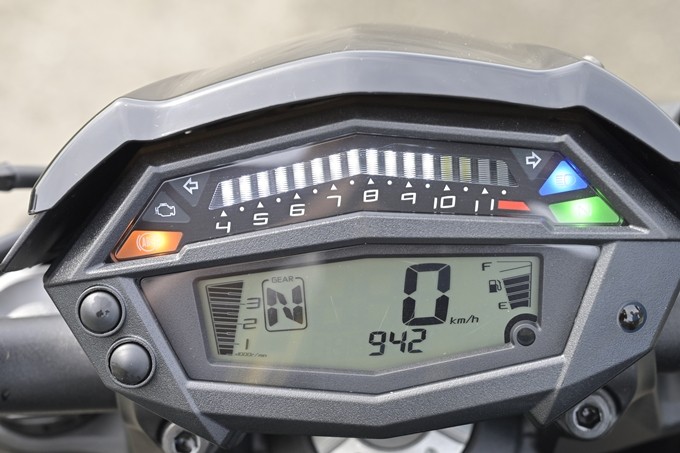
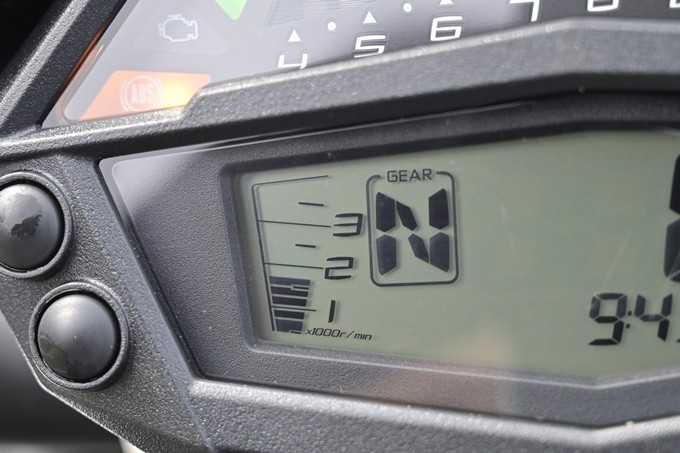
Displayed items
Speed / Engine RPM (split) / Shift indicator / Fuel level / Clock / Odometer / Trip meter x 2 / Gear position / Average fuel consumption / Instantaneous fuel consumption / Range available / Water temperature gauge / Oil warning
The compact instrumentation is laid out on the handlebars. The distinctive feature of the tachometer is its split-level tachometer: below 4,000rpm, an LCD panel at the bottom; above 4,000rpm, an LED lamp lights up from the left on the upper bar graph.
Riding performance
Engine

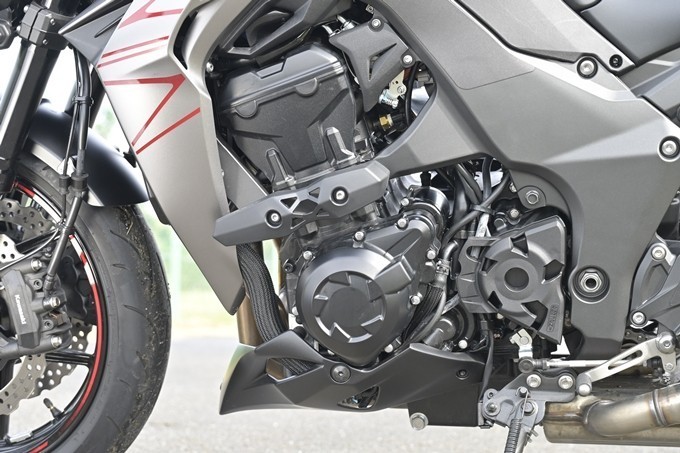
[Engine type/Displacement] Liquid-cooled 4-stroke DOHC inline 4 cylinder/1,043cc
[Maximum output] 104kW at 10,000rpm
[Maximum torque] 111Nm at 7,300rpm
After 4,000rpm, it suddenly becomes more ferocious and blows up at a furious pace towards its peak power of 141 horsepower at 10,000rpm. In particular, the way the engine blows up above 6,000rpm is more violent than exciting. It's a ferocious engine characteristic befitting its rugged design.
Handlebar
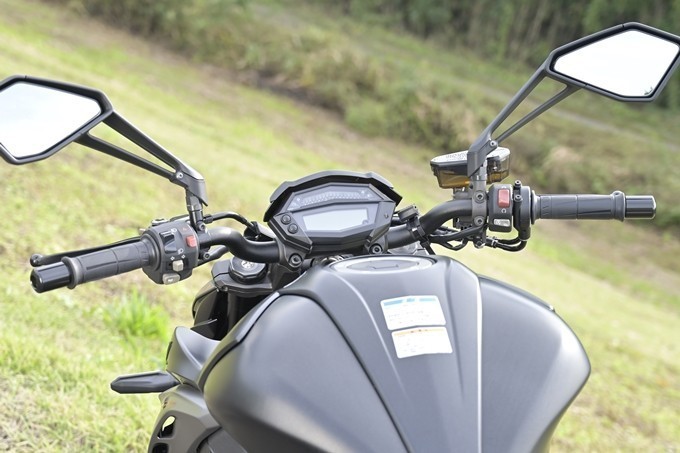
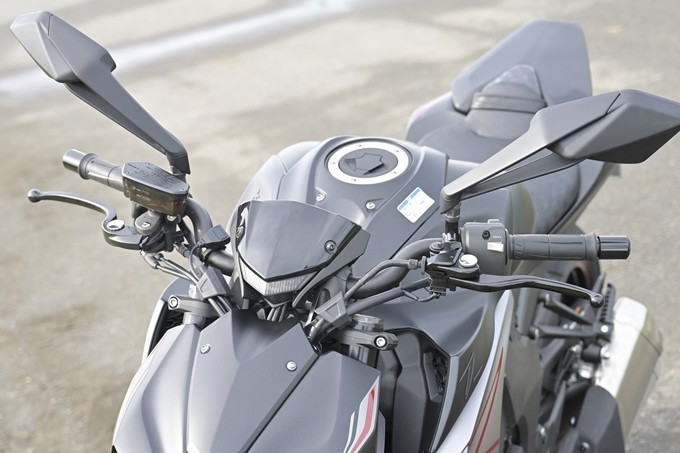
The styling is forward leaning, but the riding position also gives the impression of leaning forward and gripping the handlebars. The gauges are laid out above the handlebars, giving you an unusually wide view of the road ahead, which adds to the sense of acceleration and gets the adrenaline flowing. The handlebars are tapered aluminum with a small 29 degrees on each side, and U-turns are not my strong suit.
Undercarriage
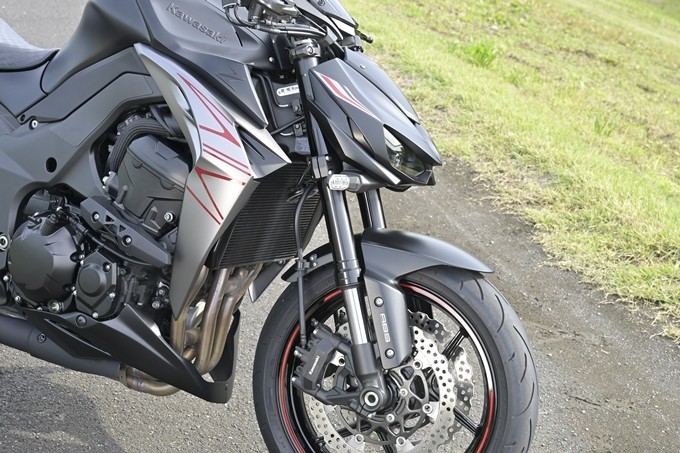
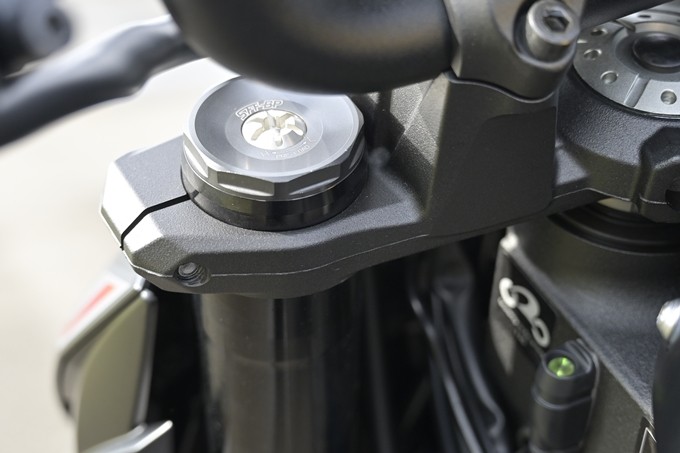
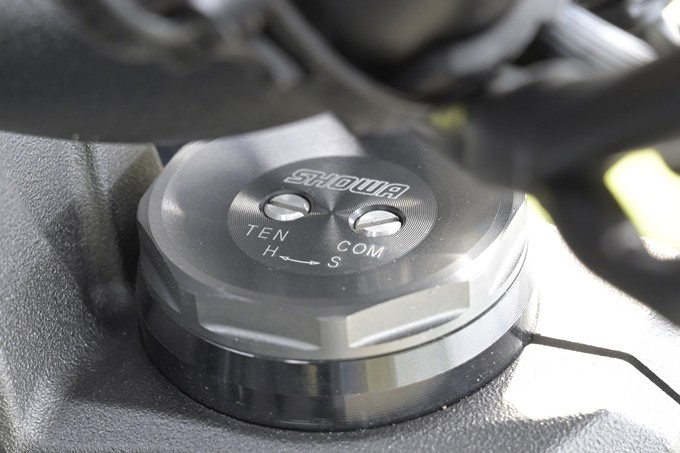
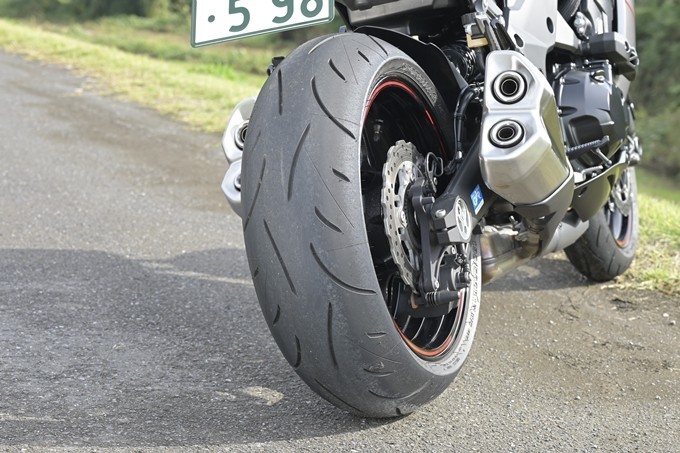
[Tire size] Front: 120/70ZR-17, Rear: 190/50ZR-17
The 41mm diameter inverted front fork is a Showa SFF-BP with preload on the left side and rebound damping adjustment on the right side. The fork has a hard sporty look to it, but it's not as stiff as a supersport fork, making it easy to ride on the street. The front and rear wheel travel is 120/135mm respectively, and the huge 190mm wide rear tire is also worth mentioning.
Brakes
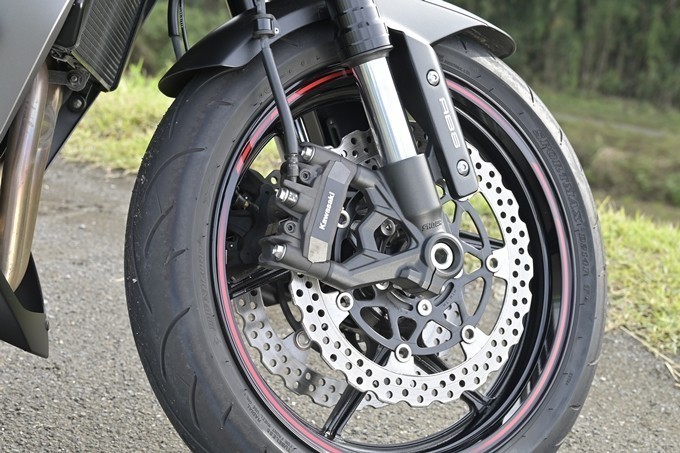
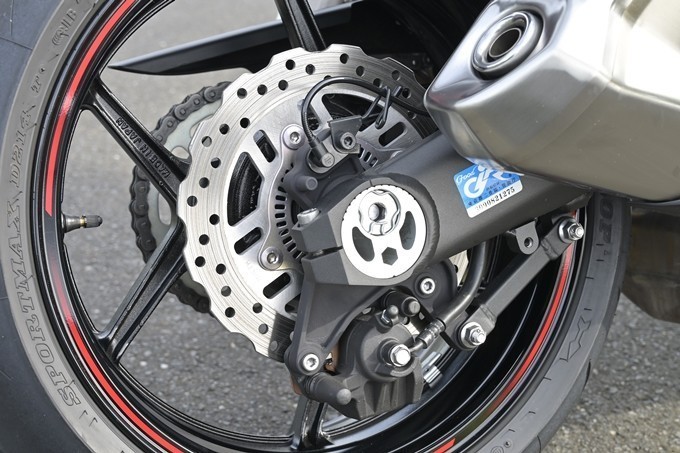
[Front] Opposed 4-Pot/Petal disc
[Rear] Single-sided 1-Pot/Petal disc
The front brakes are a double 310mm disc with radial-mounted opposed 4-piston monoblock calipers, capable of holding down the Z1000's powerful power. The rear brakes are a single 250mm diameter petal disc.
Quadruple exhaust systems
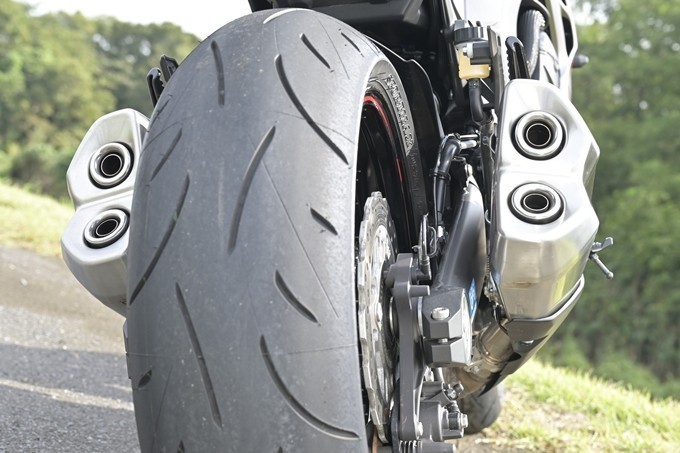
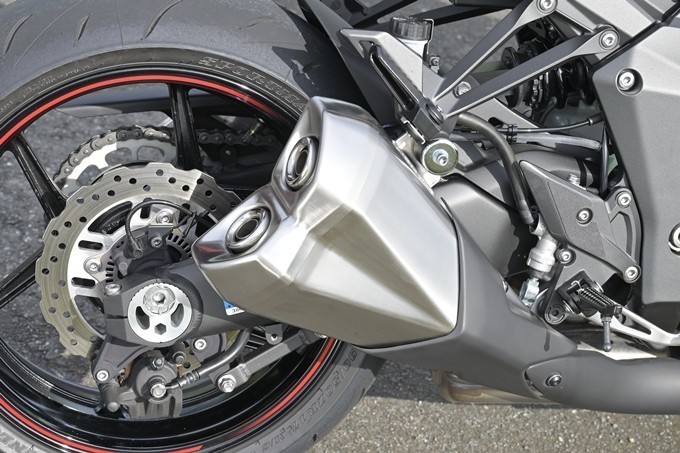
The four silencers, two on each side, assert that it is a legitimate successor to the Z. The four-cylinder sound, accompanied by a muffled bass note, sounds like a yell the more you open the gas pedal. Now that it is Euro 4 compliant, is the next model scheduled to appear!
Rear suspension
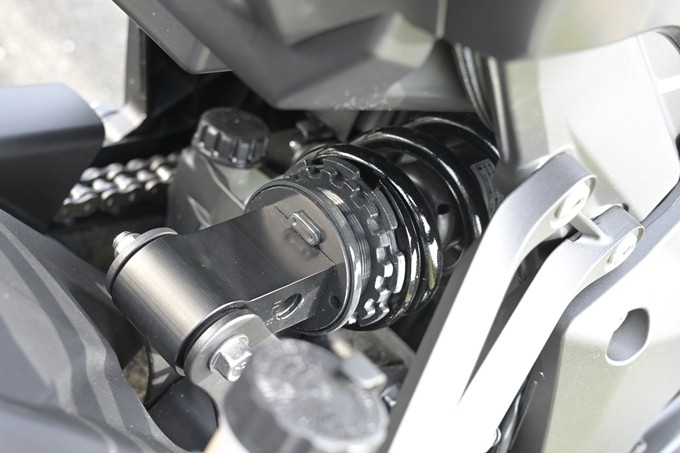
The rear suspension was based on the "Horizontal Back-link" rear suspension, which consists of the shock unit and links laid out above the swingarm. The name comes from the fact that the shock unit lies close to the horizontal position, which is advantageous in terms of lower seat height and greater freedom in terms of body layout such as mass concentration. In addition to preload adjustment, the damping can be adjusted in the extension side.
Footpeg
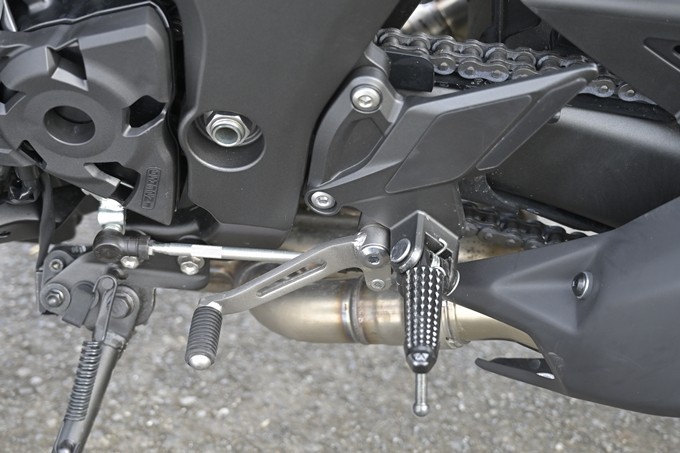
The sporty, rubberless footpegs are a testament to the fact that this is not a touring machine, but a purely sporty one. The gears are naturally 6-speed, the chain is 525, and the sprockets are 15/43.
Eccentric adjuster
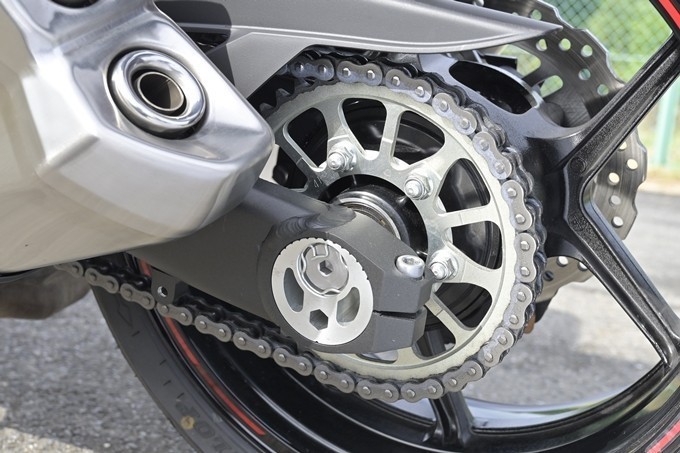
The swingarm is made of aluminium, and the eccentric adjuster is one of Kawasaki's signature features, allowing the chain to be adjusted by rotating it. An added bonus is that the collars can be reversed for better traction.
Detail introduction utility
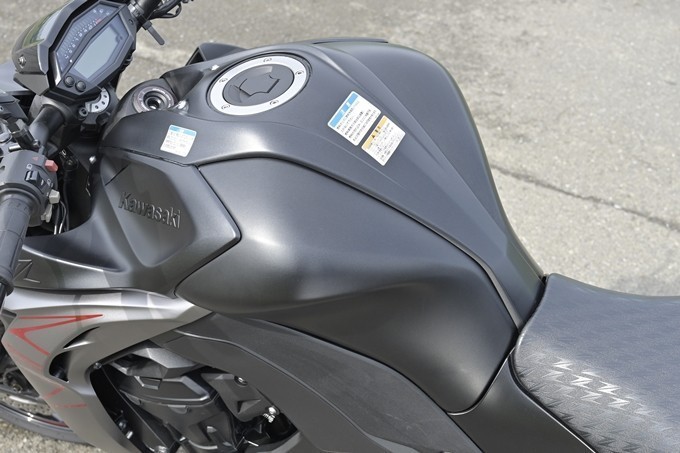
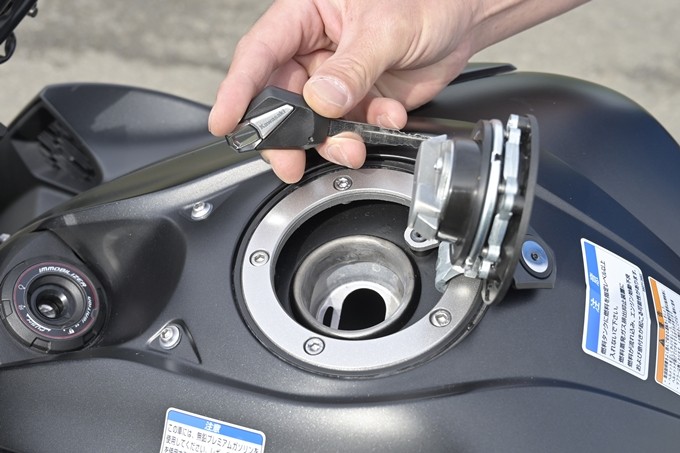
Fuel tank
[Fuel Capacity] 17L
The fuel capacity was 17 liters, and the average fuel consumption indicated on the gauge was about 16.9 km/L, which means I could drive 280 km from a full tank. By the way, when the last bar of the fuel gauge started blinking, the remaining fuel capacity was about 4 liters.
Seat
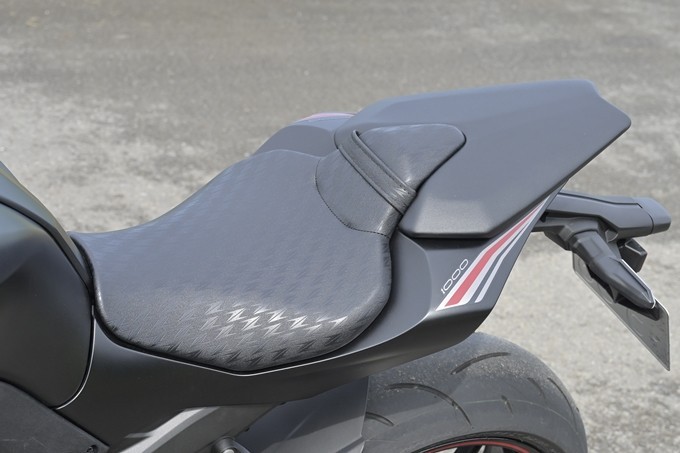
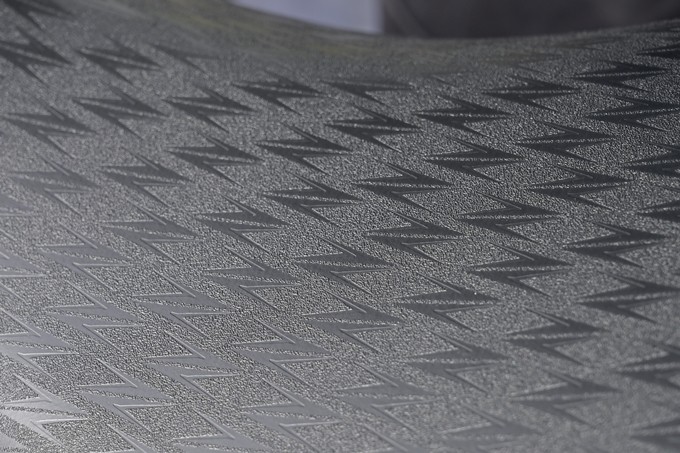
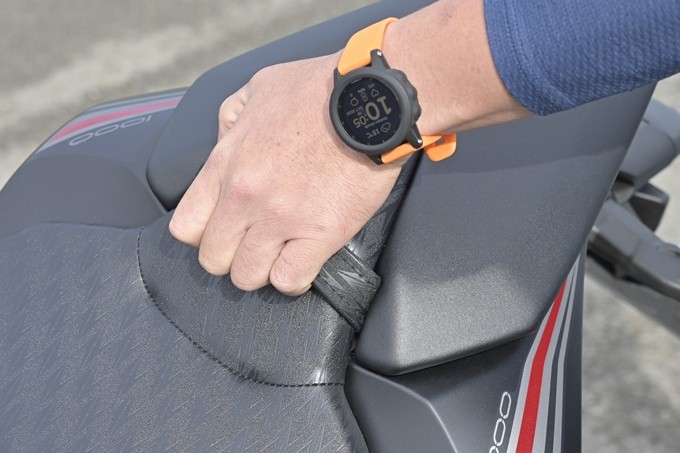
The rider's seat has a separate front and rear seat with a "Z" design, and the rider's seat is puckered like a gunfighter's seat to catch the intense acceleration. A pillion seat is also available, but the design prioritizes a small belt, giving it an emergency feel.
Under the seat
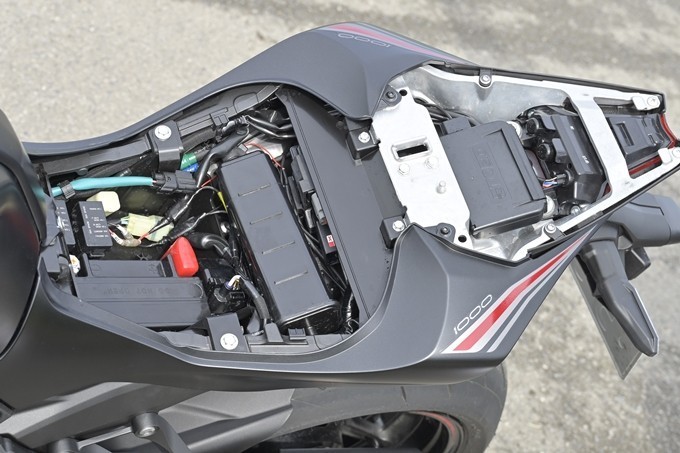
There is virtually no space under the seat. The standard ETC on-board unit sits under the tandem seat. The long black object under the rider's seat is a canister that collects evaporated gas from the fuel tank and returns it to the air cleaner box.
Cargo hook
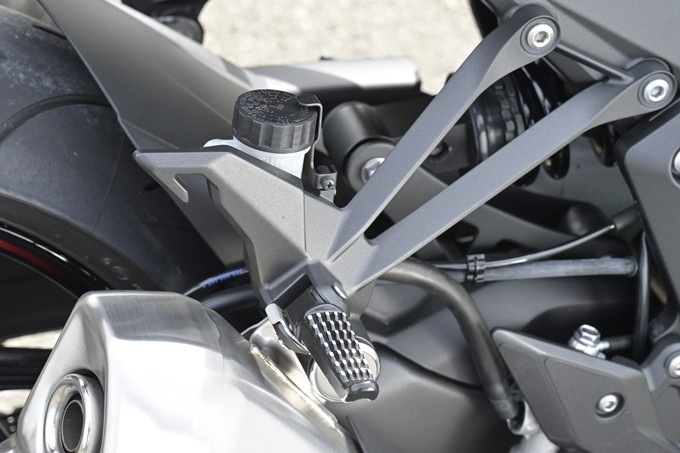
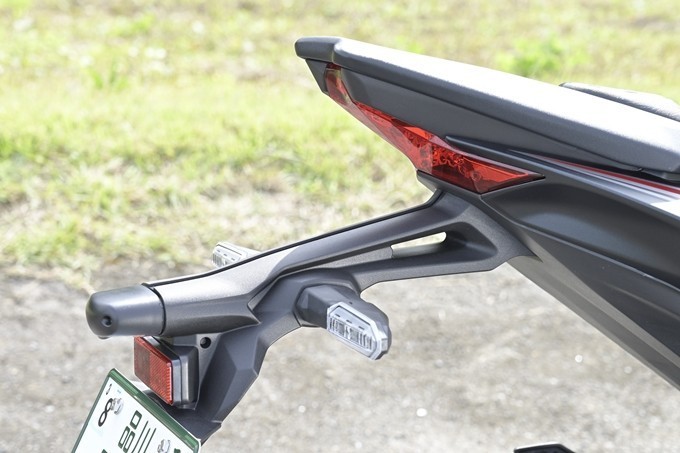
There is a loading hook at the rear of the pillion footpeg, but there is no loading hook on the rear pillion seat side. However, the license plate bracket is quite sturdy, and there is a hole in the back of the pillion footpeg that begs you to loop it through and use it as a cargo hook.
Lever adjuster
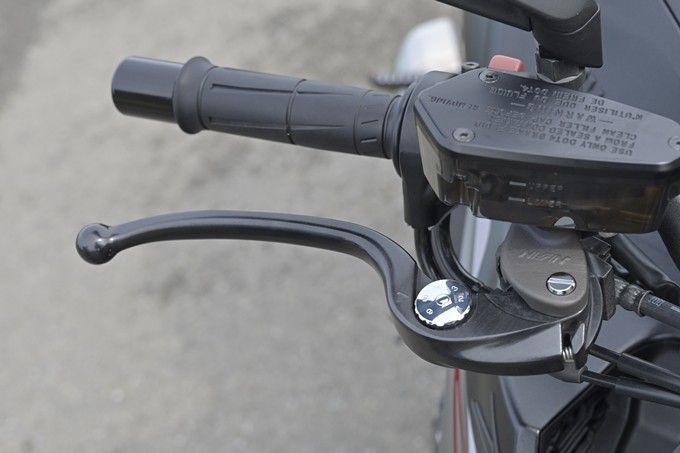
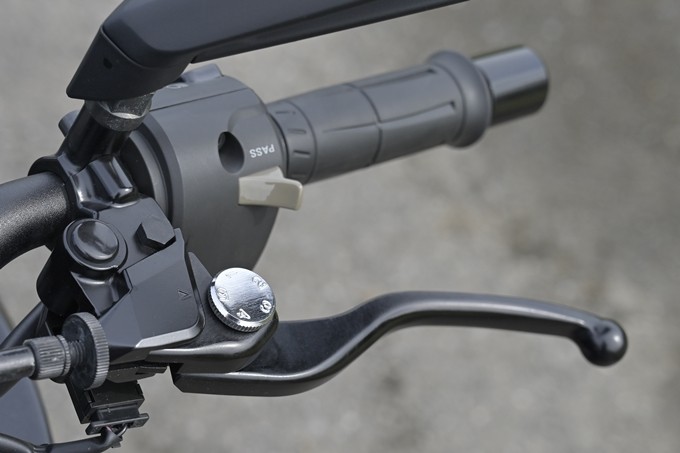
The brake lever is a Nissin radial-pump with no change in lever ratio when gripping it, as used on high-end sportbikes. The left and right levers are equipped with dials that allow the right brake lever to have six different grip ratios and the left clutch lever to have five different grip ratios.
Switch box

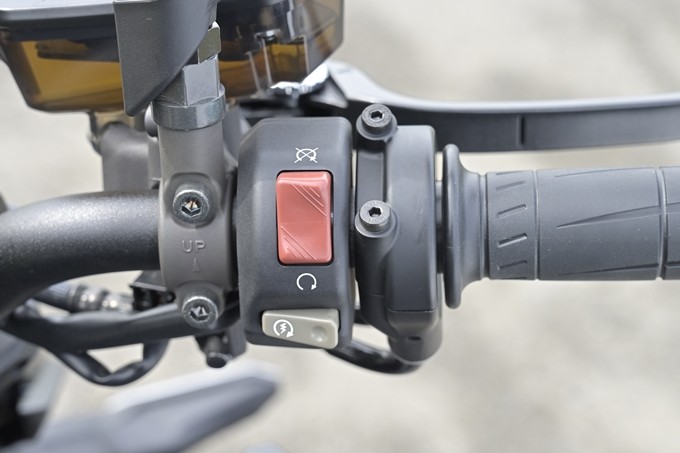
[Right] Starter switch/Kill switch
[Left] Headlight switch/Passing/Blinker/Horn/Hazard
Except for the ABS, there are no other notable electronic controls. On the contrary, there is no need to change the controls, and thanks to this, the switch box is quite simple. The throttle is, of course, wired.
Summary
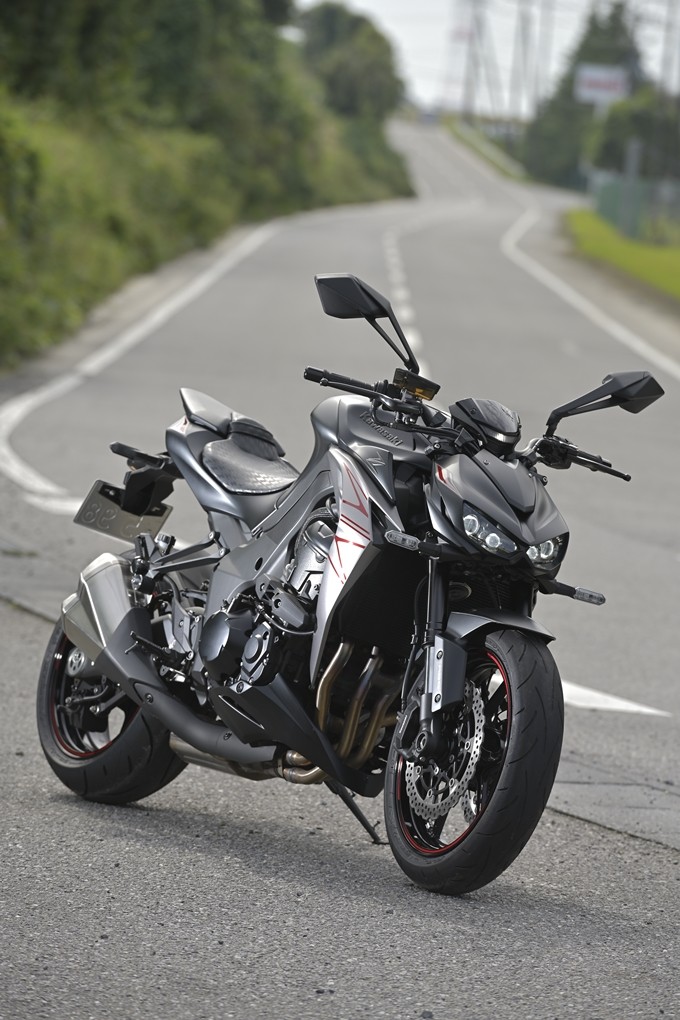
The first machine that comes to my mind when I hear a masculine KAWASAKI.
The Z1000 combines the contradictory elements of radical, spicy and easy handling in a single, non-electronic motorcycle that's not for complete beginners or riders who want to take it easy, but it's a lot of fun to ride and has an abundance of power! As of 2020, if I were asked to name a machine with a strong "Masculine Kawasaki" image, the Z1000 would probably be the first model that comes to my mind. Even after test riding the Z H2, this impression remains unchanged.
See KAWASAKI Moto Index Page
See Accessories for KAWASAKI Z1000 (Water-cooled)



